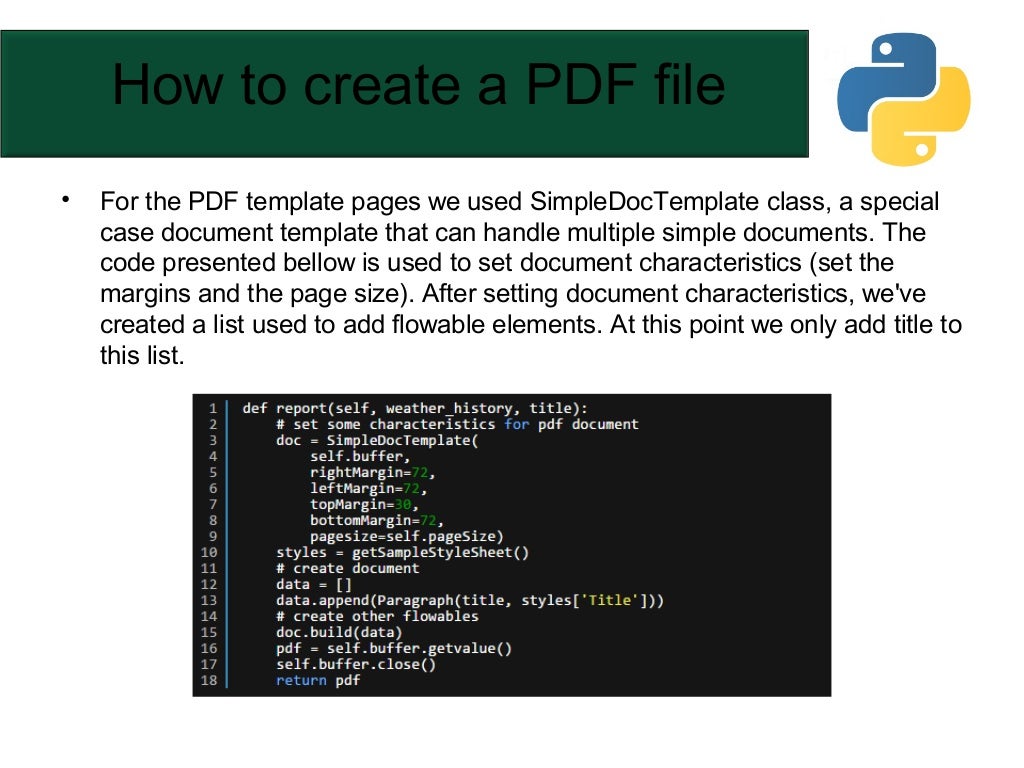

Of course, empty PDF documents don't really convey a lot of information. This results in an empty PDF file, named output.pdf on your local file system:Ĭreating a "Hello World" Document with borb It's worth noting that we used the "wb" flag to write in binary mode, since we don't want Python to encode this text. We start by creating an empty Document, then add an empty Page to the Document with the append() function, and finally store the file through PDF.dumps(). # Write the Document to a file with open( "output.pdf", "wb") as pdf_file_handle: With that in mind, let's create an empty PDF file: from import Document These are the main framework for creating PDF documents.Īdditionally, the PDF class represents an API for loading and saving the Documents we create.
#Python pdf reader install#
Installing borbīorb can be downloaded from source on GitHub, or installed via pip: $ pip install borb Creating a PDF Document in Python with borbīorb has two intuitive key classes - Document and Page, which represent a document and the pages within it.
#Python pdf reader how to#
We'll take a look at how to create and inspect a PDF document in Python, using borb, as well as how to use some of the LayoutElements to add barcodes and tables. It offers both a low-level model (allowing you access to the exact coordinates and layout if you choose to use those) and a high-level model (where you can delegate the precise calculations of margins, positions, etc to a layout manager). In this guide, we'll be using borb - a Python library dedicated to reading, manipulating and generating PDF documents, to create a PDF document.


 0 kommentar(er)
0 kommentar(er)
